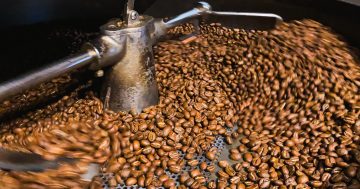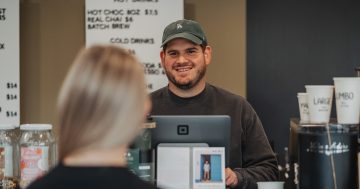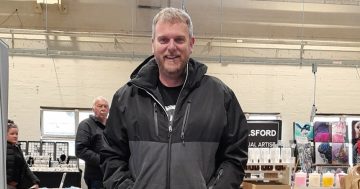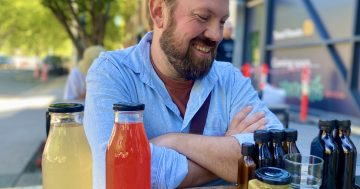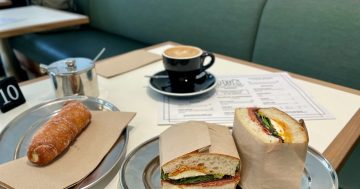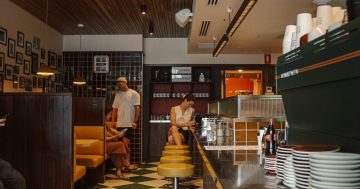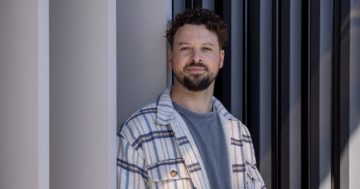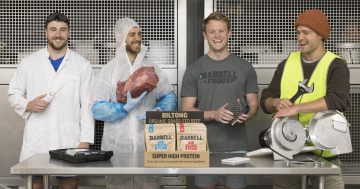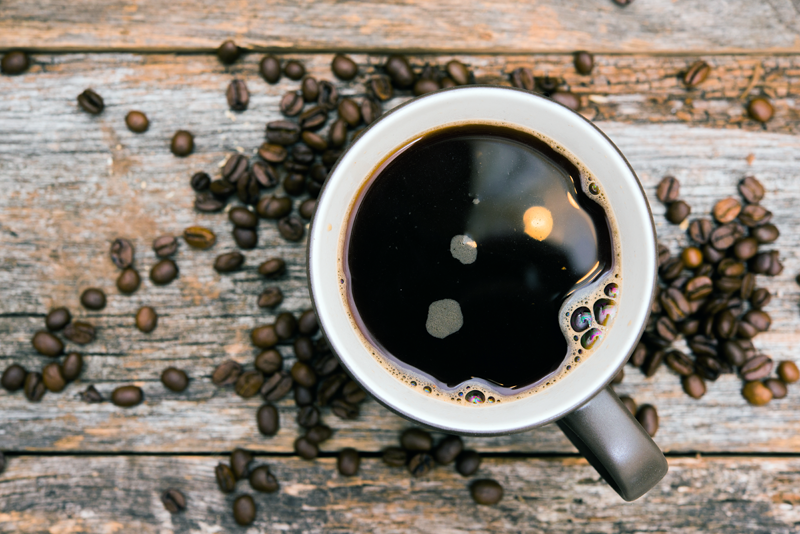
A recent article in the esteemed Canberra Times told us that we were a city of coffee snobs. Well Dear Reader, if we are to be snobs, then we better know what we are talking about. And that means understanding the ‘third wave.’ We asked our guest writer Dimitri Tricolas to give us the low-down. Dimitri is a Canberra boy who has handled coffee machines since the age of 15. He currently works at Sydney’s famed Brewtown Newtown as a roaster and barista while pretending to study at Sydney Uni.
The chocolate is disappearing from the top of your cappuccino. A gentleman with Hemingway’s beard and Gilligan’s bucket hat says something about brightness. Or was it acidity? Maybe florals. Somebody hands you a little card with a bunch of words on it. Most of them you’ve never seen before and can hardly pronounce: Hiari Ya Moyo, Buziraguhindwa, Nyungwe, Plan Del Guayabo. A girl with bangs and a literary tattoo is doing something strange with a timer, some scales and what looks to be a penis pump. All you wanted was a goddamn cappuccino.
No, this isn’t a David Lynch production; it’s third wave coffee.
It is not explicitly clear what is meant by the term “third wave.” Most coffee professionals seem to have different and at times, conflicting ideas about what the term means. Tim Castle, then president of the Specialty Coffee Association of America (SCAA), coined the term in 2000. It described the emerging movement of coffee producers that emphasise high quality coffee preparation at all stages of the production line–that is, from seed to cup.
In this sense, the third wave is about approaching coffee as an artisanal product rather than as a commodity. Although what Castle was referring to may not have included the slew of hipsterisms that have indeed become synonymous with specialty coffee, those very hipsters that seem eager to educate you, the customer, are indeed a part of the third wave movement. And what’s more: they may not be as pretentious as you think.
To understand the third wave, it is vital to investigate its predecessors. According to Castle the first wave began in the sixties and although the movement was highly entrepreneurial, it took the quality of its product equally as serious as its profits. Alfred Peet (of Peet’s fame) emigrated from the Netherlands to San Francisco in 1955, bringing with him the long Scandinavian tradition of meticulous coffee roasting and production, and a bitter distaste for what the new locals were drinking.
Companies like Starbucks in the United States, and Costa in the UK, birthed out of the culture that Peet had cultivated, emerged as higher quality retail alternatives to the giant industrial roasters that dominated the landscape (think Nescafe, Folgers etc.), inspiring a wave of independent coffee houses whose trademark was a departure from anonymously sourced coffee and carelessly prepared beverages.
By the mid-eighties however, things began to change. Espresso was gaining rapid popularity Stateside and presenting itself as an incredibly versatile foundation for a new epidemic of high profit beverages that fundamentally changed the way consumers thought about coffee. The same quality obsessed entrepreneurs who had revolutionised coffee in the sixties and seventies had grown older, became total sell-outs, and a new breed of coffee-chain tycoon was born.
The business of coffee became massively commercial, and the shitty quality of espresso being prepared lent itself rather well to litres of hot milk, flavoured syrups, whipped cream and coconut flakes. The coffeehouse became big business, and the giant chains realised that sourcing quality coffee and equipping baristas and roasters with the skills to produce a high quality product was too much of an overhead when the real money presented itself in the form of sugary, cheap, mass-produced extras.
The second wave took its toll not only our palates, but on our planet. The developing world, where most of our coffee comes from, found its farmers and its habitats exploited by corporate greed. Monumental supply chains were forged in an ultra-consumerist climate whose moral ineptitude resembled the volcanic ashes of Mordor. Nobody was winning.
At this point, you might be scratching your head wondering where this culture was in Australia? This culture was, and indeed still is, an entirely American invention. And that is exactly the point. The idea that these cultural waves ever existed fits succinctly into an American paradigm that–thanks to the massive globalisation seen in the nineties–was exported to the rest of the world.
However, early twentieth-century European immigration is what paved the way for Australia’s coffee culture. Free from American cultural hegemony, Australians have been enjoying espresso since the 1930’s in independent cafes and indeed milk bars nationwide–a lesson learnt by Starbucks in recent times.
Nevertheless, a renaissance of what the pioneers of the sixties set out to achieve began to appear sometime in the nineties. Probably around the time the word “frappucino” was trademarked. A revolution against the madness of corporate, crappy coffee was born. Alternative brewing methods enjoyed a resurgence, quality coffee became a top priority with roasters taking a keen interest in their product from the seed to the cup. Relationships between roasters, farmers, and baristas have never been so respectful and reciprocal, and as a result the consumer now has more access than ever before to the highest quality, most ethical cup of coffee. That is the third wave. A place where green juices, subway-tiles, insufferable hipsters, and the highest quality coffee marry.
I spoke to Charles Cameron, owner and director of coffee at Brewtown Newtown in Sydney about the status of the third wave and what the future holds for coffee culture. Upon my suggestion that a fourth wave might be in our midst, he mentioned Canberra’s own Sasa Sestic of Ona Coffee, along with Mark Dundan of Seven Seeds in Melbourne and Toby Smith of Toby’s Estate in Sydney, who all maintain excellent relationships with the farmers from whom they source green beans.
“Like sommeliers in great French restaurants having relationships with wine-makers and asking them to try different things at the production end based on their sophisticated palates and recommendations, we definitely are seeing a similar thing in the coffee world,” he says. This results quite clearly in better coffee, and better conditions and payment for the people in the developing world who grow the stuff.
As for the ethical future of coffee, Charles was adamant that “there will always be wiggle room for improvement. Smaller players will always find an avenue to improve, whether it be making all their coffee from rainwater that they’ve purified and collected themselves, or like Single Origin Roasters in Botany having solar panels to power their production. It’s wonderful that specialty coffee is so reliant on, and so in touch with the earth’s climate… the innovations and technological breakthrough that coffee pushes for will always have sustainability and the earth’s future in mind.”
Finding oneself a wee bit out of one’s comfort zone is a remarkably small price to pay for what is ultimately a superior product. The cutting edge will always be alienating to some, but that’s not such a bad thing when you look a little deeper into what effect the passion and dedication of a few “coffee snobs” has. Perhaps you are right to accuse the next barista that doesn’t offer chocolate with your cappuccino of pretension, even though they are offering you substance when all you were searching for was style. But even so, when we weigh up the benefits to farmers in poor nations and the bigger question of sustainability, you may rest assured our coffee drinking future is safe in their hands.


